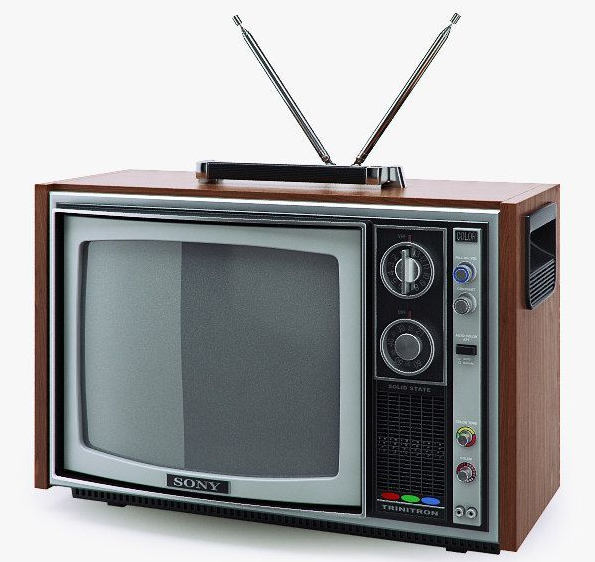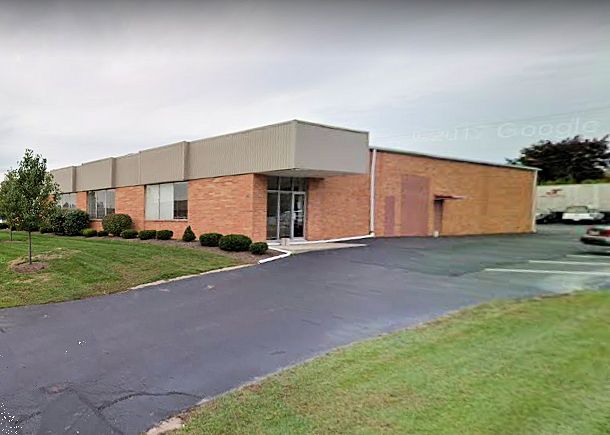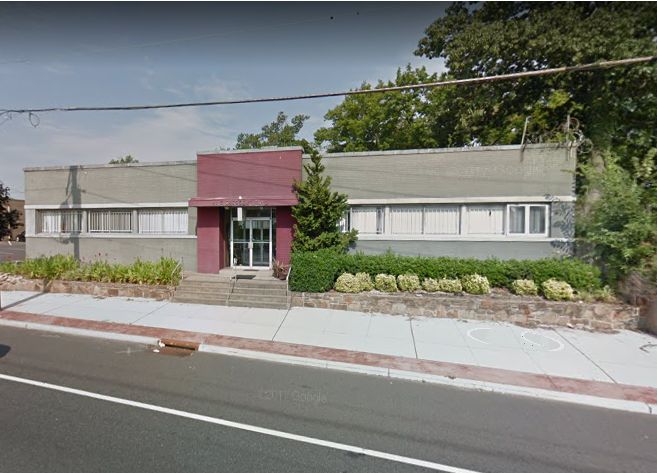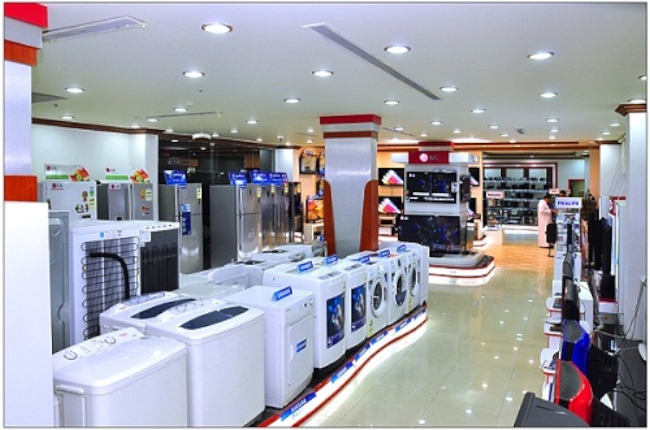Business Careers
An Autobiography
S & S Associates
“If opportunity doesn't knock, build a door” Milton Berle
 I had been pursuing studies in physics and electronics at LaSalle College—now LaSalle University. Each semester, I enrolled in two courses, attending classes four nights a week. Summers were no break; I took accelerated courses in July and August while my wife and children vacationed with her parents in Massena, NY. It was a rhythm of sacrifice and ambition, a quiet march toward a better future.
I had been pursuing studies in physics and electronics at LaSalle College—now LaSalle University. Each semester, I enrolled in two courses, attending classes four nights a week. Summers were no break; I took accelerated courses in July and August while my wife and children vacationed with her parents in Massena, NY. It was a rhythm of sacrifice and ambition, a quiet march toward a better future.
But as graduation approached, the landscape shifted. Nixon’s wage freeze and the suspension of military contracts cast a shadow over the prospects in electronic engineering. The doors I had hoped to walk through were closing.
Then, while scanning the Help Wanted ads, a management listing caught my eye—its wording was distinctive, almost poetic. I responded with a résumé and a cover letter that mirrored its tone. When weeks passed without a reply, I regretted taking the creative risk.
But one Sunday afternoon, the phone rang. The caller asked if I had personally composed the cover letter. Admitting that I had, he requested that I come to his office in King of Prussia immediately for an interview. I explained I was painting my house, but he insisted I "come-as-you-are."
That afternoon, I met Sy Hochman of S&S Associates—a company that sold and repaired industrial electronic test equipment. Inspired by the frustrations of trying to service the electronics in his luxurious red Lincoln Continental, Sy wanted to expand into home electronics repair. He had one part-time technician and a vision. He needed someone ambitious and creative to help build it.
I got the job—and a raise.
Sy was a force: degrees in Electronic Engineering and Law, and a goal to become the largest home electronics repair center in the Delaware Valley. We began reaching out to manufacturers—from Admiral to Zenith—to become their authorized warranty service provider.
I designed a repair ticket system that met each manufacturer’s standards, created a parts tracking system using 4x6 index cards, and built a replacement parts inventory from transistors to motors. Some manufacturers reimbursed us for defective parts; others exchanged them. I tracked it all.
Then came the customers. Sy taught me sales techniques, and together we visited retailers and department stores—John Wannamaker, E.J. Korvettes, Gimbels—convincing them we could handle their repairs more efficiently and cost-effectively.
Within two years, I had hired 12 employees: a secretary, nine technicians, a parts manager, and a delivery person. We serviced everything from stereos to microwave ovens and VCRs. We became the warranty center for over 40 manufacturers, both domestic and foreign.
Repairs arrived by the truckload. Each store had its own system—Gimbels invoiced us at full retail and credited us upon return. To manage the volume, Sy added a second floor to our warehouse and I implemented a color-coded tagging system. We were, without question, the largest home electronics repair center in the region.
Around 1970, RCA launched Service America—an ambitious attempt to offer in-home repair for all brands. I saw the flaws in their model, and in time, Service America folded.
But so did Service in Electronics.
Nixon’s economic policies—praised politically—crippled small businesses. S&S Associates closed its Bethesda office. Sy’s partners moved into our King of Prussia facility, even taking over my office.
Then, tragedy struck. Sy Hochman died in an accident while on business in New Jersey. His partners, uninterested in the repair business, shut down Service in Electronics and let me go.
To stay afloat, I took a job at Seifert X-Ray, a neeighbor in our small industrial park. But within a year, a door opened. JCPenney called in response to a résumé I had submitted when SIE closed. They wanted to interview me for the role of Product Service Manager.
During the interview, the regional manager was impressed by my grasp of the service industry. Their operations mirrored the systems I had built at Service in Electronics. The only new challenge was in-home service—but I would eventually revolutionize their dispatching methods.
JCPenney Service Manager, Dayton, OH
“I turned an empty warehouse into an award-winning, profit-making JCPenney Product Service Center”
 In 1971, I interviewed for the position of Product Service Manager at JCPenney—a moment that would shape the next chapter of my career.
In 1971, I interviewed for the position of Product Service Manager at JCPenney—a moment that would shape the next chapter of my career.
The meeting took place at the Audubon, NJ Service Center, where I was asked to complete an in-basket test: a simulation of a manager’s overflowing inbox, filled with office rivalries, customer complaints, and curious letters. I was given one hour to resolve these real-world situations, including a woman concerned about a JCPenney truck parked too often and long at a widow's home.
I don’t recall how I handled that particular item, but I do remember the only feedback from all of my resolutions: I should have given top priority to a call from the Regional Service Manager. I promised to improve—and was hired that day.
JCPenney’s full-line stores, like the one at King of Prussia Plaza, offered everything from appliances and electronics to lawn mowers and garden tractors. The Product Service Centers operated independently, managing repairs, maintenance, and service contracts known as Assured Performance Plans. As manager, I would oversee staffing, assets, profits, and—most importantly—customer satisfaction.
After a brief training period, I was given the opportunity to open a new service center in Dayton, Ohio. It would support three stores: Centerville Mall, downtown Xenia, and an outlet in Cincinnati. My experience at Service in Electronics proved invaluable.
While JCP searched for a location, I worked from the Columbus Service and Parts Distribution Center. Eventually, they found a warehouse near the mall—far from ideal, but full of potential. It was a large, empty space with three front offices, two restrooms, and a ceiling-mounted gas heater in the rear of the building.
My family stayed in Pennsylvania while I transformed the warehouse into a fully functional service center. I designed the layout from scratch: assigning the offices and constructing workshops, a parts department, and my office using steel shelving and particle board. Each workstation—electronics, appliances, gas engines—was carefully planned for efficiency, with the gas engine shop placed near the overhead door for easy access to outside.
I hired and trained a full staff: technicians, call takers, contract salespeople, and a bookkeeper. Independent contractors were phased out, and store teams were trained on the new procedures. Within a month, the Dayton Product Service Center was operational.
One of my first challenges was dispatching technicians. In Audubon, they used a magnetic board and colored magnets. I didn’t have the space, so I improvised—copying the Area Code Map from the phone book, arranging six maps (Monday through Saturday) on a cork board, and using colored push pins to represent service calls. Red pins for electronics, blue for appliances, green for gas engines. It worked beautifully. Later, in Camden, I programmed a computer to manage dispatching using a similar method.
Despite limited support from the Xenia and Cincinnati stores, my center quickly gained recognition. Most of our business came from Centerville Mall, and demand grew. I added more staff, expanded the parts department, and watched our APP sales climb—second only to Pittsburgh, which had three major stores to our one.
JCPenney required monthly flash reports of profit and loss, since official statements from New York arrived ten days late. I tracked four key figures daily in my Day-Timer pocket calendar, ensuring my flash reports were the most accurate in the region.
My operational expertise led to a new milestone: I was selected to manage the very first computer implemented Product Service Center. It was a fitting evolution—one that honored the systems I had built by hand and the vision I had carried from an empty warehouse in Centerville to a regional award-winning product service center.
JCPenney Service Manager, Camden, NJ
“With no prior experience, I programed the JCPenney computer to eliminate all other typing”
 Camden was chosen to become JCPenney’s first computerized Product Service Center. Its size and proximity to New York headquarters made it the ideal testing ground. I was honored to be selected to manage it, overseeing service for all of South Jersey and the Philadelphia metropolitan area.
Camden was chosen to become JCPenney’s first computerized Product Service Center. Its size and proximity to New York headquarters made it the ideal testing ground. I was honored to be selected to manage it, overseeing service for all of South Jersey and the Philadelphia metropolitan area.
Upon taking charge, I discovered several significant issues. There was contention over an open supervisory position, employee morale was low, and both productivity and APP sales were falling short of expectations. A supervisory position had been left open, and two technicians were vying for it—one a seasoned television tech with stellar service but an accent that created communication challenges. The other was a personable appliance tech with natural leadership skills.
I made a bold decision: promote both. I created a new position promoting the electronics tech to lead shop technician, and the appliance tech became the technician supervisor. The move worked, lifting morale across the board. My resolution even became a case study at JCPenney’s annual managers’ seminar. It may have even made its way into the in-basket test.
Next, I tackled dispatching. Camden used a magnetic board map, but its only division was the Delaware River separating Pennsylvania and New Jersey. My Area Code system from Dayton wouldn’t work—Philadelphia was 215, New Jersey 609. So I created four zones: one for New Jersey, and three for different parts of Philadelphia—Northeast, West, and South. It took practice for the schedulers, but the new system improved scheduling, productivity, and morale.
Then came the computer.
JCPenney had chosen a Motorola system due to delays with IBM. The software required extensive data entry with little payoff. Every time a customer bought a hardline product, the information from our copy of the pink sales slip had to be entered into the computer before filing it. As usual, if the customer purchased an Assured Performance Plan (APP), it had to be typed and mailed before filing. A backlog of sales slips grew. Dispatchers were buried in slips. Customers waited weeks for their APPs. Frustration mounted.
The computer created duplicate efforts and I expected that it should serve our needs instead. Therefore, rather than employing additional data entry staff, I started by looking for a way to accelerate the data entry process.
Motorola’s solution—abbreviations for city names—was clunky. I proposed using zip codes to auto-fill the city and state. Motorola explained what had to be done to implement zip codes but declined to do it. So I did it myself.
Using the telephone directory, I compiled a file of 120 zip codes—87 in Philadelphia, 33 in New Jersey. I created a record for each, linking it to its city and state. Then, using Motorola’s guidance and my own observations, I modified the program: open the file, skip the city and state, retrieve the zip code record, read the city and state, and post them to the customer’s record.
It worked.
The morning I told my dispatchers they no longer had to type city and state, they were ecstatic. Data entry sped up. The backlog shrank. And just like that, I had written my first computer program.
With the success of the zip code implementation, another idea took root. What if I could build a model number file that automatically posted the product description and warranty expiration date to the customer’s record?
JCPenney sold hundreds of models—TVs, appliances, garden tractors, and water heaters with warranties from 30 days to five years. I created the file. Each record included the product description and the number of warranty days. Then I modified the program: when the typist entered a model number, the system retrieved the record and posted both the description and the warranty expiration date.
Calculating that expiration date was a stroke of genius. With no formal programming background, I converted the sales date to Julian format, added the warranty days, and converted it back to a calendar date. If the Julian date exceeded 365, I subtracted 365 and added one to the year. For leap years, I subtracted 366. It worked.
These two modifications transformed our workflow. Dispatchers could enter customer records without delay, and the computer became a reliable source of information when customers called. Morale soared. The machine everyone had once resented was now a trusted ally. This was the second of many programs I would write. Then came the APP forms.
Typing Assured Performance Plans after entering all the data into the computer was redundant—and no program was scheduled to automate APP printing for another year. So when a truckload of blank APP forms arrived at my office, I saw an opportunity.
This project was more complex. I had to modify the main program to flag records with APPs, and then code a printer program from scratch—one that could print customer and product information in precise locations on pre-printed forms. I relished the challenge working diligently through trial and error to get the information printed precisely on the forms.
The first day we were ready to print contracts was exhilarating. We stacked the blank APP forms, loaded the printer, and ran the program. The machine began churning out service contracts faster than we could count. My three dispatchers were overjoyed. No more typing APPs. Once entered, sales slips could be filed away—never to be retrieved again.
And it wasn’t just my team who celebrated.
My Pitney-Bowes sales rep was thrilled. He had a machine that could take a stack of printed forms, remove the perforated edges, separate them, fold them, stuff them into envelopes, seal them, and stamp them. I got that machine.
Efficiency had become elegance. What started as a workaround became a system. And what was once a burden became a source of pride.
Yet I wasn’t ready to stop there. With the success of my programs, I knew I could go further. I envisioned a scheduling system that would keep service calls geographically grouped—just as I had done in Dayton using telephone area codes. This time, I used zip codes.
When a customer called for service, the program offered the dispatcher three available days. The customer could choose, or the dispatcher could override for emergencies or special needs. With a single keystroke, service calls were scheduled. Goodbye magnetic dispatch board.
Next, I wrote a program to print technician dispatches. No more typing APPs, assigning calls, or creating route sheets. Typing was nearly eliminated. Goodbye IBM Selectrics.
Camden’s APP sales soared. We took control of sales for Ephrata, PA and Wayne, NJ. Then we took over Wilmington, DE product service entirely. My sales area now spanned all of New Jersey, Delaware, and Pennsylvania west to Harrisburg. I managed thirty APP sales reps, and our annual sales climbed from $10,000 to over $1 million.
Then came Computer Phase II.
My boss arrived with a corporate JCPenney programmer and a Motorola contractor. They were discussing how to print APPs. Their ideas were so inadequate that I had to reveal the truth: I had already written the program. Not only did it print APPs, it also included the location and phone number of the nearest JCPenney service center—something they claimed couldn’t be done.
I explained how my zip code file, originally used to post city and state, now included service information for each zip code. The programmers were astounded. My boss was surprised—perhaps even unsettled. They insisted I hand over the source code and returned to New York.
I didn’t mention the dispatching program. I gave them only the modified original source code and the APP print program.
A few days later, I heard from Senneta Koch, a JCPenney programmer I had befriended during the initial setup. She confirmed that my programs couldn’t be improved and would be used exactly as written. She was thrilled—and sent me an engraved 18" steel pica ruler, a tool programmers use to align print on forms.
Thank you, Senneta—wherever you are today. If only I’d had time to show you the dispatching program. But in April 1983, JCPenney exited the appliance business and closed all product service centers. I was out of a job.
Camden had been the only computerized service center. If I had known then the true value of the software I had written—if I hadn’t been so modest about my accomplishments—I might have approached Motorola about my future.
American Appliances Service Manager
“I carefully laid out a one-year reorganization plan that worked so well they didn't need me after nine months”
 After JCPenney shut down its product service centers, Montgomery Ward offered me a position in South Carolina, but I had promised Bob we wouldn’t relocate—he deserved to finish school with his friends.
After JCPenney shut down its product service centers, Montgomery Ward offered me a position in South Carolina, but I had promised Bob we wouldn’t relocate—he deserved to finish school with his friends.
That promise came at a cost. My search for local employment in management was long and fruitless. I applied for a service manager position at a major fuel oil company, but the owner insisted I needed hands-on boiler repair experience. I applied at a large office machine retailer, only to be told I was overqualified. I even applied for a manager role at ITT Technical Institute, but came in second—my résumé lacked formal classroom teaching.
Many of my former employees at JCPenney found new roles at American Appliances—technicians, dispatchers, service contract sales. They encouraged me to join them. My reputation as a manager preceded me, and the owner was eager to bring me into his service department.
But I hesitated. American Appliances, despite being a major Delaware Valley retailer, had a troubling reputation. Customers were frustrated with both sales and service. I didn’t want to be part of that. Still, the need for a stable salary won out, and I accepted the role.
From day one, the problems were glaring. No records existed for merchandise received from stores for repair, yet the service department was held accountable for missing items. Technicians were helping themselves to replacement parts. Dispatching was chaotic—some techs ran their own side businesses, even selling American Appliance parts while still on AA's payroll.
I acted quickly. I shut down the parts department and implemented a strict exchange policy: new parts were only issued in return for used ones attached to signed work orders. I introduced signed shipping and receiving manifests to track every item sent and returned.
I reinstated my manual dispatch system from JCPenney. The two dispatchers—both former employees—welcomed the return to order. My former contract sales supervisor now oversaw APP sales, though, unlike JCPenney, I had no involvement in that area.
I had crafted a meticulous one-year reorganization plan. But I soon learned that accountability wasn’t popular. Technicians and store managers resisted the changes. The comptroller even warned me to “watch my back.”
The working conditions didn’t help. My office sat atop a ramp, and dispatching was across the hall. I spent my days running up and down that incline. Oh, my aching back.
Customer complaints were constant. I was on the phone, writing letters, or appearing in Small Claims Court. At JCPenney, we bent over backwards for the customer. Here, my boss believed that low prices would keep them coming back—regardless of how they were treated. Strangely enough, he wasn’t wrong.
After nine months, I was fired.
The official reason? My reorganization plan hadn’t worked, and I delegated too much to the technician supervisor. It was a tactic to block unemployment benefits. But my loyal former employees told me the truth: the technician supervisor wanted my job. He was a long-time employee and a buddy of the owner. Now that the department was organized and running smoothly, he was ready to take over.
I had done my part. I had restored order. But the culture wasn’t mine to change. It was time to step back from management—and perhaps explore a new path.
Real Estate & Mortgage Sales
“After failing to sell advertising, office supplies, and computers, I thought I could sell houses!”
 With no doors opening in management, I turned to sales. Friends around me were thriving—Barbara sold condominiums, Sherry sold houses, Dick Goodwin built and sold entire communities, and Dick Schultz sold paper. I tried my hand at advertising, office supplies, and computers. Nothing stuck.
With no doors opening in management, I turned to sales. Friends around me were thriving—Barbara sold condominiums, Sherry sold houses, Dick Goodwin built and sold entire communities, and Dick Schultz sold paper. I tried my hand at advertising, office supplies, and computers. Nothing stuck.
Eventually, my friends encouraged me to try Real Estate.
I enrolled in classes at Fox & Lazo Realty’s training center. With my business background, the coursework was manageable, and I passed the licensing exam on my first attempt. I was hired at their office on Tanner Street in downtown Haddonfield.
Haddonfield was affluent and picturesque—boutiques, restaurants, Victorian homes, and the Tavistock Country Club. But competing with seasoned agents was tough. I was learning the ropes, slowly.
Real Estate demanded everything. We were in the office by eight, held regular meetings, and rotated “floor” duty to assist walk-ins. Cold calls were essential. Listing presentations happened in the evenings. If you landed a listing, weekends meant open houses. You were on call seven days a week, juggling clients who changed their minds often. And when a sale finally happened, the paperwork was relentless—mortgages, title clearances, inspections, repairs—all urgent.
However, having many friends in the business, I lacked a center of influence. Most of my clients came from floor duty. One of my first was a divorcee whose ex-wife lived in Haddonfield with their daughter. He wanted a condo for weekend visits. There was only one small condo development in town, and he wasn’t impressed. Instead, he set his sights on Haddonfield’s only hotel—what I believe is now the Kings Highway Apartments. I told him I didn’t think it was for sale. He smiled and said, “Everything is for sale, Charlie.”
He was wealthy enough to prove it. He drove down from New York on a snowy day with a $10,000 cashier’s check to initiate negotiations. I arranged an offer, but Fox & Lazo claimed I was creating a conflict with their Commercial Department. The hotel sold a year later—but not by me, and not to my client.
In my first year in real estate, I sold two houses and earned $8,000. To supplement my income, I took on wallpapering jobs—a skill I’d learned as a teenager from Peg Walker. One coworker offered a pointed observation: “You are what you do. Do you want to sell real estate or hang wallpaper?”
The next year, I sold four houses and earned about $12,000. Still not enough. I pivoted to selling mortgages, hoping my real estate colleagues would use Crestmont Federal Savings & Loan for their clients. That, too, fell short.
What truly intrigued me, though, was computers. I missed programming. I bought a Commodore 64, and its DOS operating system felt familiar—like the one I’d used on the Motorola mainframe back at JCPenney.
It wouldn’t be until 1988 that I’d finally get my chance to become a programmer.
©Copyright 2001 Charles Tyrrell - All rights reserved
No part of this publication may be reproduced, stored, or transmitted in any form without prior permission of the author. Copyright Notice
No part of this publication may be reproduced, stored, or transmitted in any form without prior permission of the author. Copyright Notice